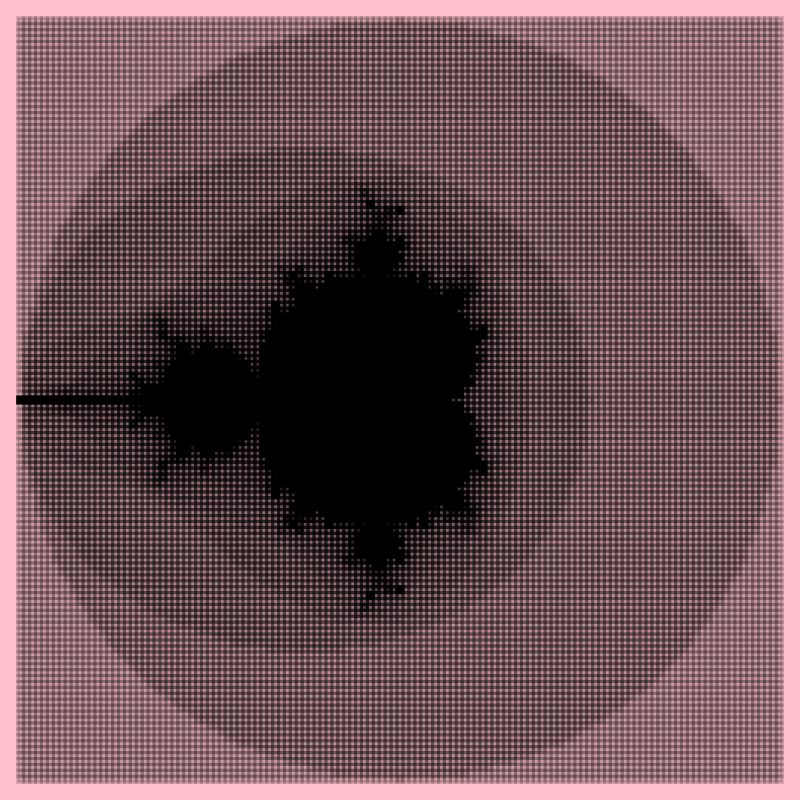A discretized version of the familiar Mandelbrot set. Adapted from code written by MathematicalOrchid.

import Diagrams.Backend.SVG.CmdLine{-# LANGUAGE NoMonomorphismRestriction #-}
-- Adapted from: "The MathematicalOrchid, 24 Feb 2007"
-- http://warp.povusers.org/MandScripts/haskell.html
import Data.Complex
import Diagrams.Prelude hiding (magnitude,image)Code to compute orbits of complex numbers under the Mandelbrot transformation, and decide on the magnitude of a pixel based on how slowly its orbit diverges.
quadratic c z = z*z + c
critical_orbit :: Complex Double -> [Complex Double]
critical_orbit z = iterate (quadratic z) 0
pixel = length . takeWhile (\z -> magnitude z <= 2) . take maxIter
maxIter = 32
edge = 128Generate a grid of points of the desired size.
side n v0 v1 =
let sv = (v1 - v0) / fromIntegral n
in [v0, (v0 + sv) .. v1]
sideX = side edge (-2) 2
sideY = side edge (-2) 2
grid = map (\y -> map (:+ y) sideX) sideYGenerate the Mandelbrot image as a grid of pixel magnitudes.
image = map (map (toSquare . pixel . critical_orbit)) gridTo lay out the pixels in a grid we have to make them into a square whose opacity varies with the square root of the pixel value.
toSquare n = square 1 # lw medium # fc black # opacity (sqrt o)
where o = fromIntegral n / maxIter
example = (vcat . map hcat $ image) # bgFrame 3 pinkmain = mainWith (example :: Diagram B)